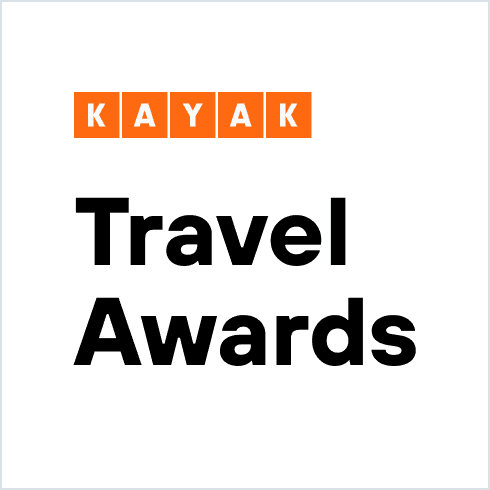Situated between the foot hills of the Aberdares and the magnificent snow-capped peaks of Mount Kenya, the 110,000-acre private wilderness of the Ol Pejeta Conservancy boasts an astounding variety of wildlife, including all the members of the ‘Big Five' (the endangered black and white rhino , leopard, elephant, buffalo and lion).
Offering one of the highest wildlife densities in Kenya and a higher wildlife to acre ratio than any Kenyan national park, the conservancy offers sanctuary to a number of endangered species, most notably the rare Grevy's zebra and the Jackson's hartebeest. The largest black rhino sanctuary in East Africa, the conservancy also hosts the only sanctuary for chimpanzees in Kenya.
Sweetwaters Serena Camp is located on the 110,000 acre Ol Pejeta Conservancy in Southern Laikipia. We regret the current problems brought about by the drought in the area and remain confident that the government, private sector and the pastoralist communities are working hand in hand to reinforce law and order whilst they seek a lasting solution. The affected area is about 100Kms away from the Ol Pejeta Conservancy where we are located. The Conservancy remains fully supported by its neighbors and is entirely unaffected.
The conservancy is home to 79 critically endangered black rhinos (Diceros bicornis michaeli). At present there are only 539 black rhinos in Kenya, though it is hoped that this population will rise to 650 by 2010. Take into consideration that fact that in the 1970s, Kenya's population of black rhinos was thought to be in excess of 20,000, and that by the 1980's it had dropped to only 300, and the scale of Kenya's conservational challenge becomes all too clear. As the largest black rhino sanctuary in Kenya, the conservancy is at the forefront of the present conservation schedule and already runs a number of revolutionary tracking and monitoring schemes. Additionally, the conservancy is working towards contributing a further 75,000 acres of prime black rhino habitat towards the national conservation programme.
The conservancy is home to 40 lion, 20 cheetah, 30 leopard and 60 spotted hyena as well as numerous smaller predators such as; jackal, caracal and bat-eared fox. A number of the conservancy's lions are equipped with GPS radio collars, which are linked to GSM (Global System for Mobile communication technology) tracking devices. The collars allow the movements and behavior if the lions to be monitored; they also allow the conservancy staff to maintain the balance of wildlife on the conservancy by observing the impact of the lion upon such prey species as hartebeest, whose population had fallen by 50% over the last ten years, largely as a result of lion activity. With prior arrangement, guests may accompany the lion-tracking patrols on their rounds, affording a unique insight into the life of lions in the wild.
There some 300 African elephant (Loxodonta africana) on the conservancy, though their numbers are dependant upon seasonal migration patterns. The conservancy features a number of major wildlife migratory corridors, which link the Laikipia/Samburu ecosystems, and which offer vital migratory paths for the elephants.
The Ol Pejeta Conservancy Centre is a research station dedicated to the preservation of this unique environment, which is one of only four such reserves in Kenya. The Centre offers a colourful educational facility where visitors may look, touch, feel and learn more about the wildlife, the birds and the flora. It also offers a basic grounding in the ancient art of bush craft, such as spoor identification, tracking and the use of medicinal herbs.
Established in cooperation with the Kenya Wildlife Service and the Jane Goodall Institute for Conservation Projects for Chimpanzees Throughout the World, the Sweetwaters Chimpanzee Sanctuary is a non-profit-making venture and the only sanctuary of its kind in Kenya. A gentle and charming diversion for children and adults alike, it introduces the visitor to two communities of chimps, one of which can be viewed from a timbered hide, and the other from across the Ewaso Nyiro river. A total of 43 chimps live in the sanctuary, most of them rescued from captivity in Burundi and now adjusting to a new life of peace and harmony within the natural environment. The sanctuary also offers a fascinating interactive information centre where visitors can learn more about the chimps by means of a series of hands-on activities.
The Conservancy holds the largest single herd of pure Boran cattle in the world (2,000 top quality Boran breeding cows). The Conservancy is also a pioneer in proving that livestock ranching and wildlife conservation need not be mutually exclusive.
So abundantly populated is the conservancy that every game drive offers the possibility of sightings of elephants, lions, rhinos and hippos and the virtual certainty of sightings of giraffes, zebras, gazelles, warthogs and buffalos. Visitors can also enjoy the varied scenic habitats of; the elephant swamp, the hippo hide, the oryx plains and the winding reaches of the Ewaso Nyiro River. Because the conservancy is a private reserve, it is not restricted by the usual rules that apply to the national parks, where night game drives are not normally permitted. A uniquely specialized activity, a night game drive is the ultimate safari luxury. Night is the exclusive domain of such hunters as lions and leopards, and the only time when you may catch a glimpse of such elusive nocturnal creatures as aardvarks and bush babies. Typically, safari vehicles will be equipped with a powerful hand-held lamp, which can be used to sweep the bush for likely sightings. Amongst the many creatures you can expect to see are: aardvarks, bat-eared fox, porcupines, bush babies, bushbucks, mongoose, genet cats and a number of nocturnal birds.



